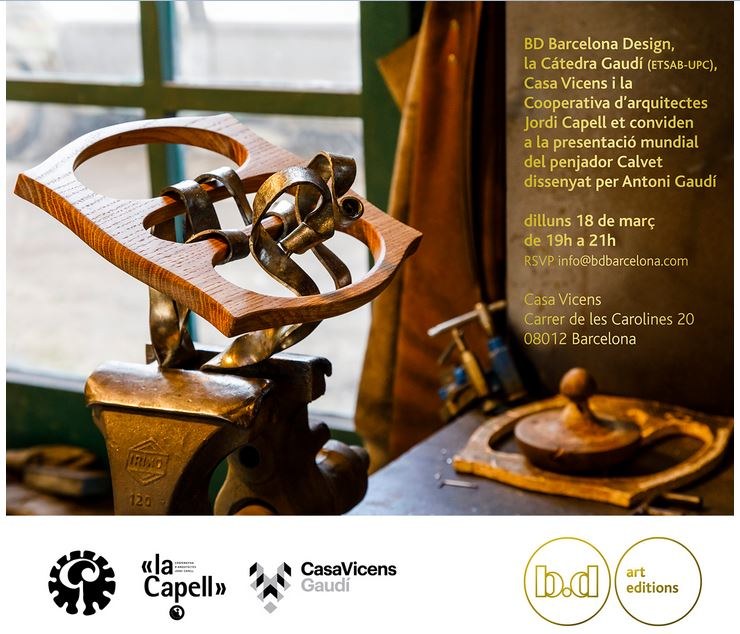Calvet hanger. Antoni Gaudí
Mar 20, 2019
Casa Calvet was built by Gaudí for the Heirs of Pedro Mártir Calvet, manufacturers of textiles, between 1898 and 1899, although the finishing works were not completed at least until 1903, the year in which a large part of the furniture had to be made. As in many other buildings of this type in the Ensanche de Barcelona, the owner's house was on the main floor, while the ground floor and basements were occupied by the offices and stores of the business. For the main living room of the house Gaudí designed a set of sofa, armchairs, chairs and stools upholstered in silk, built with golden metal chassis and supported on legs and wooden posts, inspired, without a doubt ironically, in the Louis XV style admired then by the aristocratic bourgeoisie of all Europe, while the furniture designed for the different environments of the offices are all of a single material, oak tongue and groove, which at that time was beginning to replace other more "luxurious", such as rosewood or the mahogany-, and consist of a considerable variety of tables, chairs with or without arms, benches, canapés, stools, shelves and screens, forming what is undoubtedly the most homogeneous and complete set of furniture of the entire career of Gaudí. But in addition to the main furniture, some minor elements draw attention for their complexity, be it referred to the humor with which some fashion styles are interpreted then, as with the "rococo" mirror, whether referring to its own structure, as both hangers that have arrived until our days, a large one, of polychrome iron and wood in the form of crown, and another, individual, that is the one that occupies us here, and that forms part of the collections of the Gaudí Chair. Perhaps this is the smallest piece of furniture ever made by Gaudí -18 centimeters of maximum dimension- and yet, it is produced and reveals all the complexity of major works, for which pieces like these constitute, precisely, the test bench. Let's focus on it. A central wooden body, of rectangular shape, undulating edges and surface crossed by three elongated openings, is joined by means of two brass bands to two other elements, also made of wood, turned with rounded shapes, one of which is the support parietal and the other the hanging itself, although also the bars of the central body could hang garments like scarves or objects like umbrellas, for example. To look closely at this small piece of furniture is impressive, since the brass ribbons keep all the vividness of the gesture some hands, those of Gaudí without a doubt, that have turned them into a knot with which to join the three wooden parts: light and undulating, they bind them gently, without violating them, maintaining complete independence between them. As in so many other occasions in the work of Gaudí, in this hanger there is no "design", in the sense of something that has been "projected" before, of something that has to materialize a project, but there is action, that of the fingers that handle the ribbon with which the solid elements are subtly linked in the air. But there is still more. What are, in effect, these three wooden elements? One, the one that is fastened to the wall, is a serial production support; the other, the one that serves as a hanger, has all the appearance of one of those tornadoes that are so abundant in furniture or railings; And it does not seem the third, in short, one of those grills that host the book in a lectern? Three disparate elements which, in reality, are three objets trouvés, linked by means of a ribbon that, although made of brass, exhibits in its undulating forms the lively freshness of the newly made knot: the result is an amazing assemblage before the assemblage, a ready-made before the ready-made. As will happen shortly after with many of the techniques of avant-garde art, Gaudí does not "invent" the elements he needs to achieve previously established goals, but he "gathers" them-literally-before deciding what they will be used for, because in reality everything can serve for everything. In this wonderful little perch, in short, is found, in all its concentrated intensity, the ultimate essence of Gaudí's artistic mentality, that is, his "savage thinking".
Juan José Lahuerta

Share: